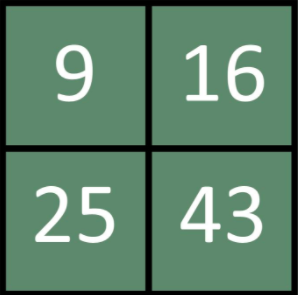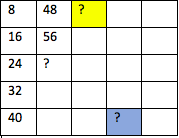Albert Einstein famously once said “play is the highest form of research”. At McMillin, we are striving to provide opportunities for students to play with numbers and mathematical concepts with the goal of developing a deep understanding of numbers and patterns.
The purpose of this post is to offer families a few ideas on how they may engage their children in mathematical play that allow them to see patterns in numbers, visualize mathematical concepts, express math ideas verbally, and see that there are multiple ways to look at any given number or problem. At McMillin, we refer this play as “Number Talks” and we use them with our students to expand their mathematical thinking and to get them talking about numbers and concepts in a deep way that goes far beyond memorizing steps to solve problems. Below are just a few Number Talks that you can use at home with your child to engage them in math.
Which One Doesn’t Belong

The idea behind “Which One Doesn’t Belong” number talks is for students to see that there are multiple ways that we can look at a set of numbers and to recognize patters in these numbers. We want students to come up with as many ways as possible to determine why any number in the set doesn’t belong and use mathematical vocabulary to justify their reasoning. How many can you and your child find? Click here for more examples.
Counting By…

Start at an given number and then practice counting a certain number more or less. Write down the numbers and then have your child look for patterns. The example here shows counting by 8. Students may see that there are patterns going down the chart. You may ask your child what strategy they are using to figure out the next number. For example, they may say they are adding 10 then subtracting 2. Other children may see that there is a 2,4,6,8 pattern in the ones digit. What patterns do you see from left to right? Students may see that they are adding 40 each time. How can we use this information to determine the the value of the yellow box? What about the blue box? How would the patterns change if it was a 4×4 grid? Why?
As you can see, the skip counting allows students to become flexible in their mathematical thinking. For example, they may not be able to remember the product of 8×7 no matter what you do. If they can fluently count by 8 and know that 8×6=48, skip count 8 more using what ever strategy works for them and students can easily arrive at 56. The idea here is that they look for patterns and become flexible in their thinking about numbers.
Please let us know if you found this information helpful and/or if you would like more examples of using Number Talks with your children by adding a comment below.
